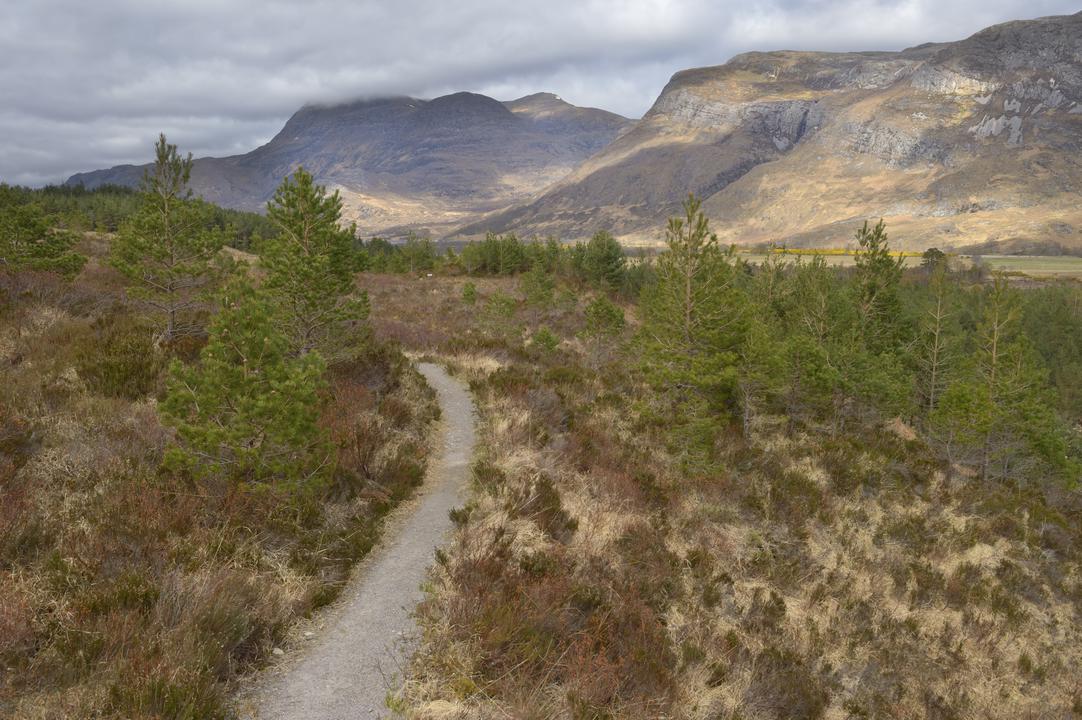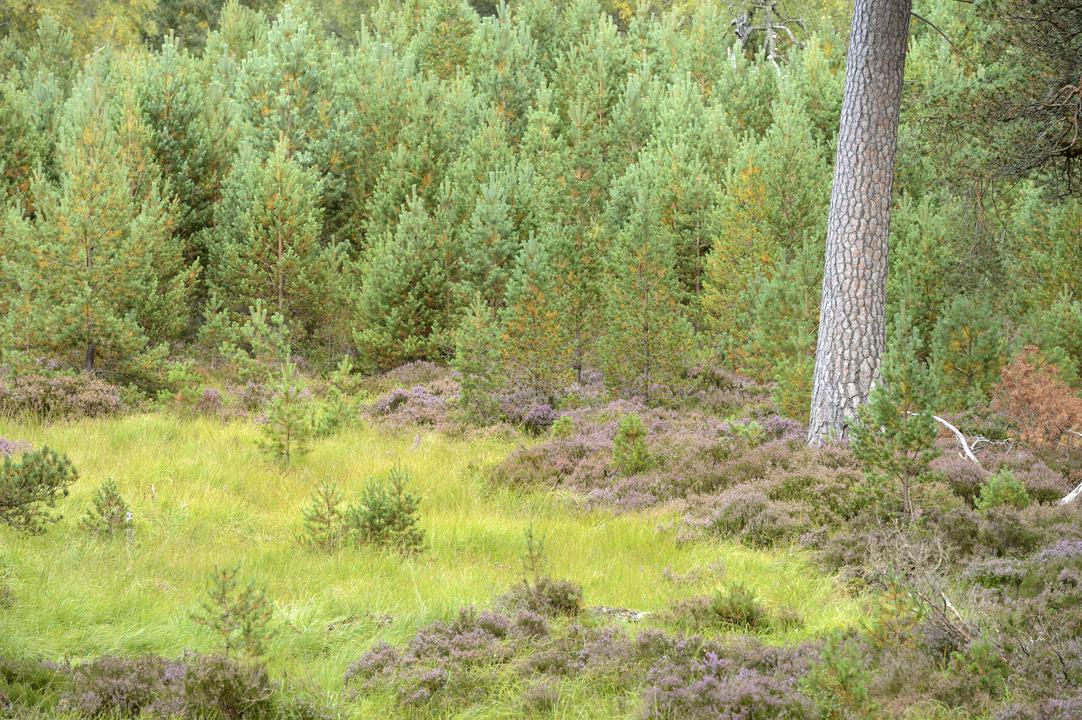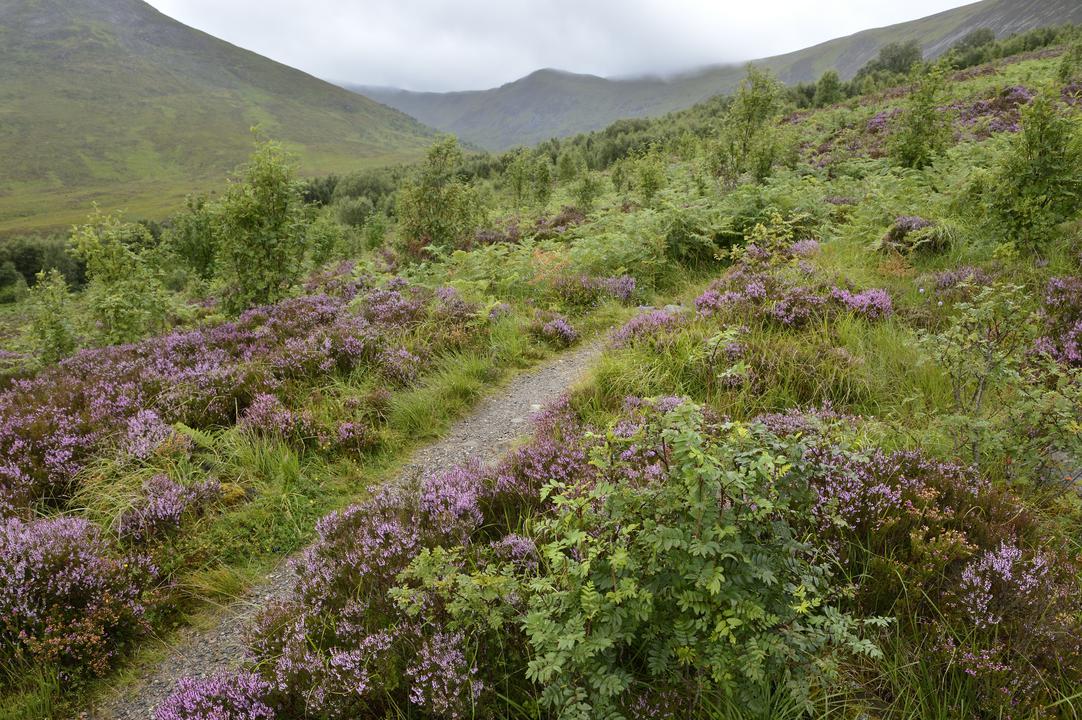Natural regeneration of native Scottish woodlands could make substantial contribution to carbon sequestration targets
A team from the University of Leeds and NatureScot have made the first estimate of potential carbon sequestration by large-scale native woodland expansion through natural regeneration in Scotland.
Tree planting and woodland establishment, particularly of native woodland, is a topic which is increasingly in the public eye. With potentially significant contributions towards the government’s net-zero carbon emissions targets and wider benefits including increasing biodiversity, flood mitigation and improving our own well-being, improving our understanding of what these ecosystems have to offer is vital.

Scots pine regeneration beside the buzzard trail, Beinn Eighe National Nature Reserve.
©Lorne Gill/Nature Scot
Currently, relatively little is known about the variations in carbon uptake and storage of different types of native woodland or how the method of woodland creation may affect this. In the UK, most new woodlands are created by tree planting, meaning that existing estimates of carbon uptake have focussed on planted woodlands. However, woodland can also establish by allowing seeds produced by nearby trees to germinate and mature in situ, a process known as natural regeneration.
“The variation in carbon uptake in naturally regenerated woodlands is not well understood, but there is potential for it to be a more cost-effective and resilient form of carbon storage as less management is required, trees are best suited to their environment and soil carbon losses may be lower” said Tasmin Fletcher, lead author of the study.

Regenerating Scots pine woodland at Mar Lodge Estate, Upper Deeside.
©Lorne Gill/Nature Scot
The researchers used a model developed by NatureScot (formerly Scottish Natural Heritage) and the James Hutton Institute (formerly the Macaulay Institute), which predicts the different native woodland types that would be expected across upland mainland Scotland. This information was combined with data on carbon sequestration in native woodlands, showing that naturally regenerated native woodland has the potential to take up nearly 7 million tonnes of CO2 per year, equivalent to 17% of Scotland’s total CO2 emissions in 2017. Relatively open woodland and scattered trees could make up a large proportion of the new woodlands, including scrub habitats which form at the fringes of a woodland’s climatic tolerance. More dense woodlands composed of oak, pine and birch are likely to provide the most significant carbon stores.
“Allowing native woodlands to expand to just 10% of their potential would double Scotland’s existing native woodland and could deliver 4% of the UK Committee on Climate Change’s carbon removal target for all UK woodland. This represents a major opportunity to deliver large-scale carbon capture, with wide-ranging public benefits including financial returns from carbon revenue exceeding £20 million per year.” said Prof. Dominick Spracklen, a co-author of the study.

Native birch woodland natural regeneration at Creag Meagaidh National Nature Reserve.
©Lorne Gill/Nature Scot
“Whilst most woodland creation in Scotland is carried out by tree planting, there are also many advantages to natural regeneration, especially for biodiversity. This work demonstrates that natural regeneration can also be very valuable for carbon sequestration, and this offers scope for building on the benefits of regeneration in supporting woodland expansion in the future” said Jeanette Hall, a co-author of the study,
The findings of the research demonstrate the potential for naturally regenerated woodlands to make a key contribution to the UK’s net-zero emission targets, whilst emphasising that further work is needed to provide greater detail on factors affecting carbon storage such as woodland composition, soil type and method of woodland creation.
Fletcher, T.I., Scott, C.E., Hall, J. and Spracklen, D.V. 2021. The carbon sequestration potential of Scottish native woodland. Environmental Research Communications, 3(4), p.041003.
